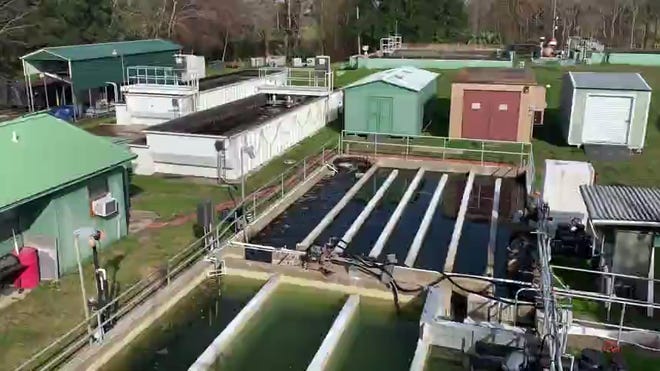Pensacola News-Journal – November 11, 2020
A battle is underway in Santa Rosa County for the protection of water wells that supply drinking water for nearly half of the county, with the county proposing a change to its comprehensive plan that would allow borrow pits to expand in a protected water overlay district.
About 12 water wells are located in the East Milton Area Wellfield Protection District, which consists of aquifer recharge areas that supply potable water for the Fairpoint Regional Utility System and East Milton Water System. The district has a protective overlay prohibiting the expansion of borrow pits in the area, which are large holes dug mostly by developers to provide dirt for construction projects and are then filled in with land-clearing debris.
There currently are 10 borrow pits in the overlay district, and the owners of some of the pits asked the county to amend the Land Development Code so the borrow pits could expand. The request alarmed not only environmentalists, but also Holley-Navarre Water System officials who said the amendment could jeopardize the potable water supply.
“We currently have close to 17,000 water taps and we service approximately 45,000 residents and businesses in the Holley-Navarre area,” said HNWS board member Mark Miller, speaking before the Santa Rosa County Zoning Board on Nov. 12. “We are absolutely opposed to changing this ordinance.”
Miller argued that borrow pits are “risky” and that the land-clearing debris that are put in the borrow pits could pose a contamination threat to the potable water if the pits are expanded, bringing them closer to the wells and aquifers.
“We’re looking at a decision about protecting the water supply that affects the entire south end of the county, and all the residents down there as well as the East Milton area,” Miller added. “I would encourage you (the zoning board) to not recommend this to the county commissioners simply because it would only benefit a few landowners, but it could potentially affect all the residents in the south end of the county.”
The zoning board members ultimately voted against recommending the amendment, but the Board of County Commissioners will have the final say. The proposal will go before the board at its Dec. 10 public meeting, and if it’s approved then, it would be forwarded to about 12 state agencies for review. It then would go back to the board after the first of the year for a third and final public hearing.
Zoning board member Margaret Neyman was one of the seven members who voted to deny the amendment, but still said it was important for the county and the water groups to come to some sort of compromise because the borrow pits are critical to propping up growth in the county.
“The pits exist because we all demand that they exist. We want to build a new house, we want to have a new shop, so we are benefiting by the existence of the pits,” she said. “They’re a necessary evil. Water is obviously much more important to us as humans, so I totally get that and I support that. But we can’t put our head in the sand. … There’s a need for pits.”
Kyle Holley, who got involved in the pit and water issues about 20 years ago when land owned by his family was purchased because of its water source, said he understood balancing the need for growth with the need for clean drinking water.
“We’re going to keep building houses, we’re going to keep driving on roads, and so we’re going to expose our water supply to runoff from things like that, because we’re not going to quit driving or quit living in houses,” Holley said. “Those are necessary compromises to the natural resources. My position is that we shouldn’t unnecessarily expose the supply to contamination factors, and expanding the borrow pits would do that.”
The pits are filled with land-clearing debris such as trees, roots, plants and other natural items, which in and of themselves can be contaminated with environmental pesticides or other contaminants that could threaten the drinking water. Not to mention, Holley said, the amount of illegal dumping that occurs and the little oversight put in place to prevent it.
“I’m of the opinion that when people bring in the land-clearing debris, there’s not really a good system of monitoring that, so oftentimes construction debris are either accidentally or intentionally included in those loads,” Holley. “We’re afraid that the material used to fill in those holes would not be good for the water supply.”
Annie Blanks can be reached at ablanks@pnj.com or 850-435-8632.


Recent Comments